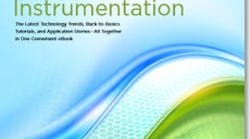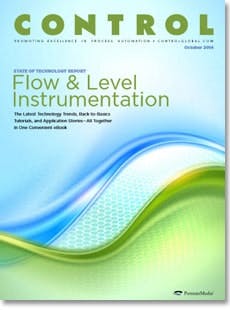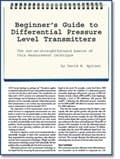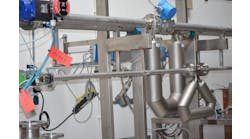Despite ongoing advances in instrumentation technology, specifying a flowmeter or level gauge that will reliably perform over the anticipated range of process conditions often remains a complex and subtle engineering task.
Dozens of niche instrumentation technologies have been developed over the past several decades to exploit nearly every conceivable physical phenomenon that might be correlated with level or flow.
On the level measurement side, this non-mechanical trend is indicated by the increased use of radar, ultrasonic and even sonic profiling gauges that offer a three-dimensional view of solids level in tanks and bins. Fiber optic probes developed for undersea oil and gas applications are measuring flowrate and composition with temperature and pressure to boot. Guided-wave radar, too, is an increasingly popular technology that falls into that category of minimal moving parts: only the float is free to move along a wave-guide probe.
But the number one flow and level measurement technology actually measures neither. Indeed, the differential pressure transmitter remains the most commonly applied flow and level measurement device—in no small part because engineers are so familiar with it.
Sure, a differential pressure cell paired with an orifice plate or other primary element can make for a relatively complicated installation (although pre-integrated assemblies are making this less troublesome) as well as incur an energy-consuming pressure drop penalty, but for many users the dependability and familiarity of a differential pressure cell still wins out over other considerations.
[javascriptSnippet]
Accuracy and other desirable performance specifications are of overriding importance in some applications, but play second fiddle to technology familiarity and trouble-free operation in others. And while more of today's users pay at least lip service to lifecycle costs, initial purchase price remains a key consideration.The continued preference for differential pressure flow meters and level gauges, and well as the ongoing viability of numerous niche technologies, demonstrate the complex interplay of criteria that go into a instrumentation purchase decision.
For example, despite the overall trend toward non-mechanical instruments for process measurements, there exists a countervailing trend in favor of mechnical devices for safety applications such as pump protection or tank overfill prevention. Here, differentiated technology plays a role in establishing the independence of safety protection layers. A mechanical switch or magnetic level indicator provides assurance against common cause failures when used in conjunction with an electronic gauge.
The balance of this State of Technology Report is a compendium of the latest trends articles, back-to-basics tutorials, and application stories recently published in the pages of Control. And while it doesn’t cover every corner of the application space, we hope you find it useful.
Download the State of Technology Report on flow and level instrumentation now.
Latest from Flow

Leaders relevant to this article:





